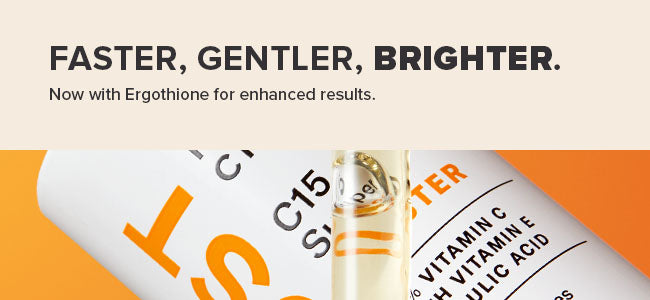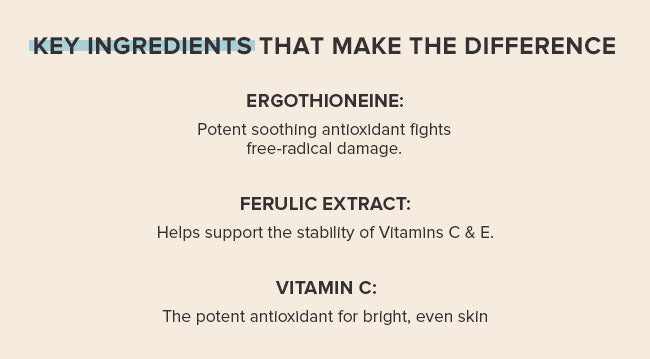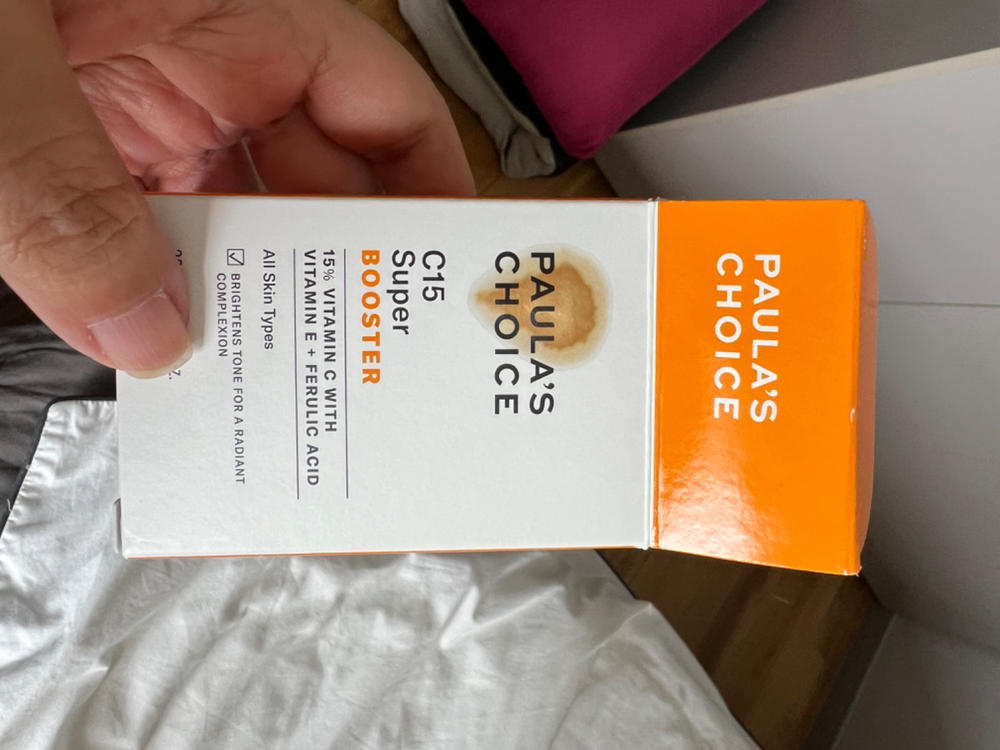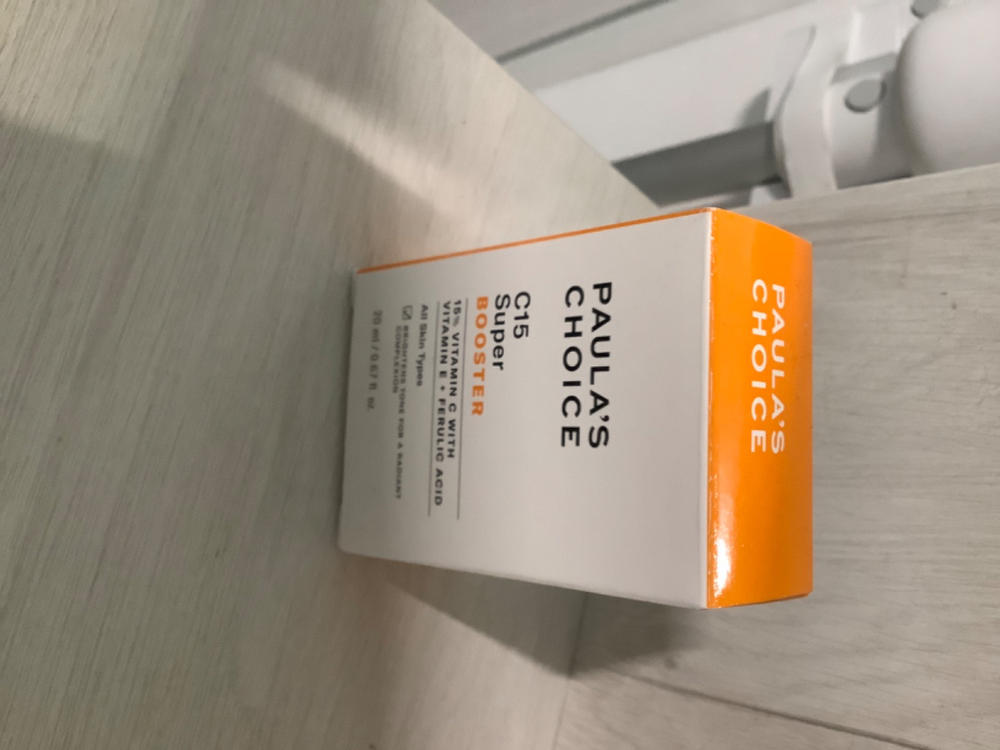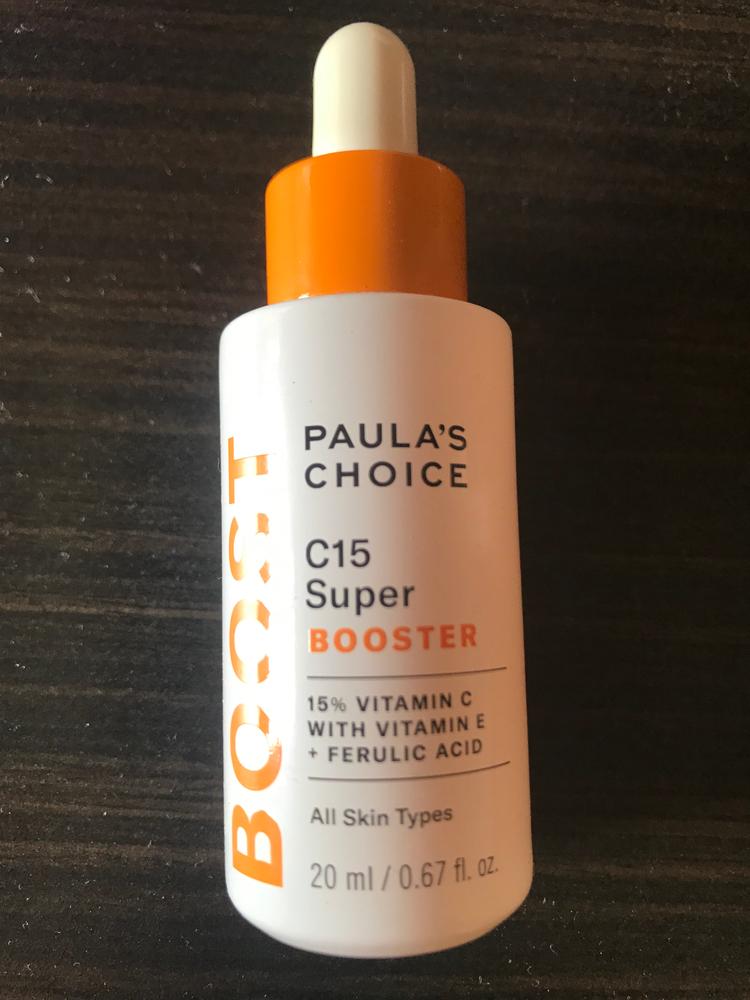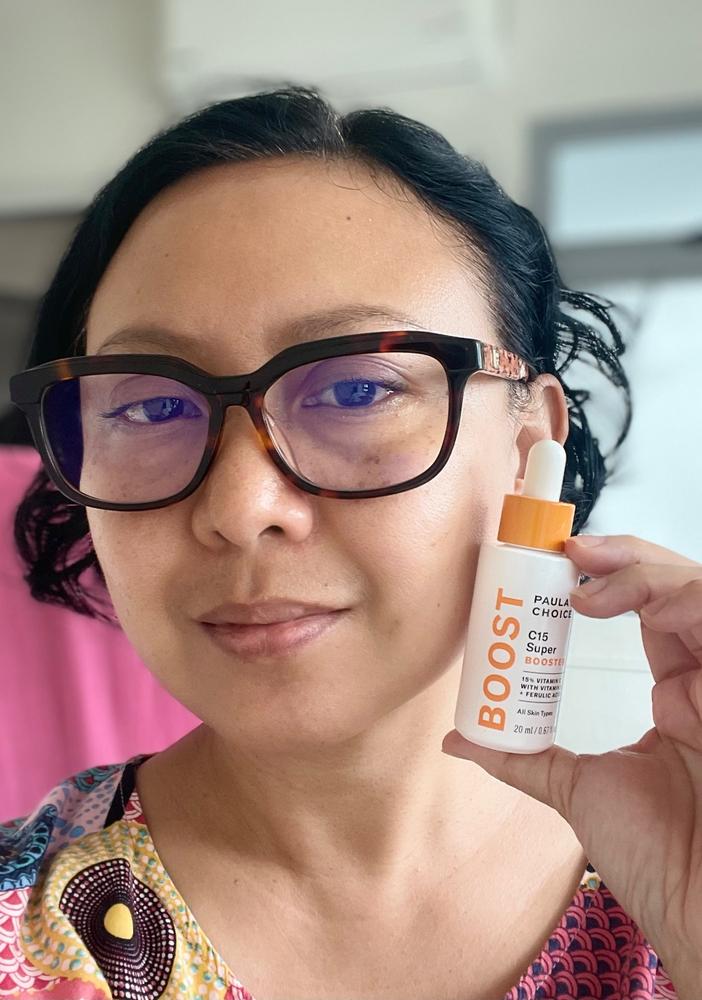How long does Paula’s Choice C15 last?
C15 is best used within three months after opening or six months if unopen. If your C15 is past its expiration, it is best to replace the product.
Can the high concentration of vitamin C in C15 Super Booster irritate skin?
Vitamin C isn’t known to cause skin irritation, but if you notice dryness, redness or burning, we recommend reducing application frequency, or mixing 2-3 drops into your serum or non-SPF moisturizer.
Is the vitamin C in C15 Super Booster suitable for breakout-prone skin?
Yes, C15’s lightweight fluid texture is suitable for breakout-prone skin. Vitamin C plus other antioxidants and calming ingredients work to reduce redness and fade the look of acne marks.
Do I need to store C15 Super Booster in my refrigerator to keep it fresh and potent?
Research supports that it is fine to do so but it’s not required. Although refrigerating many types of skin care products can hinder their stability and performance, research has shown vitamin C (ascorbic acid) in water-based formulas remains stable and effective in cold temperatures as well as room temperature, 68–72F (20–22C) upwards of 77F/25C. If you live in a hot, humid environment without air conditioning, you may want to keep your C15 Super Booster stored in the refrigerator or other cooler spaces in your home.
C25 vs C15: How is the C15 Super Booster different from C25 Super Booster?
C15’s lightweight fluid texture was designed to be used all over your face to target visible signs of aging. It renews radiance, visibly firms skin and helps even out your skin tone. It can also be used around the eyes on crow’s feet. C25 is more potent, and its silky cream texture makes a great targeted spot treatment when you’re dealing with multiple types of stubborn discolorations.
Can I use C15 Super Booster with other vitamin C products?
Vitamin C is unique in that it reduces the ongoing impact of environmental stress that results in the signs of aging. Since skin is exposed to environmental stress daily, using C15 in combination with other vitamin C products is highly recommended.
How do I use C15 Super Booster?
Apply 2-3 drops of C15 Super Booster over your face and neck after cleansing, toning and exfoliating up to twice per day. You can use C15 on its own or add a few drops into any serum or non-SPF moisturizer. For daytime, always finish with SPF 30+.
Why do vitamin C serums change color?
To ensure that C15 is irritant-free, Paula’s Choice doesn’t formulate with dyes to ensure uniform color so there may be slight color variations with this product. Visit the Help Center for more information on C15 Super Booster’s color. Vitamin C serums with ascorbic acid, including C15 Super Booster, darken over time once the bottle is opened and used due to ongoing exposure to air and natural light. This is completely fine as long as it's used within 3 months once opened.
Is vitamin C okay for sensitive skin?
Yes, most people with sensitive skin can use vitamin C safely. The high amount of vitamin C in C15 Super Booster is potent, but the formula is suitable for sensitive skin because of the additional skin-soothing ingredients and extra formulary steps taken to ensure its stability. Vitamin C isn’t known to cause skin irritation, but if you notice dryness, redness or burning, we recommend reducing application frequency, or mixing 2-3 drops into your serum or non-SPF moisturizer.
Can you mix niacinamide and vitamin C?
Yes, you can mix niacinamide and vitamin C. Modern-day skin care formulas are stabilized so that these ingredients can be used compatibly without issue. Together, niacinamide and vitamin C form a powerhouse combo to improve uneven skin tone, wrinkles, loss of firmness and dullness. See our article to learn more about why vitamin C and niacinamide play well together. If you’re new to using any these ingredients together, we suggest starting slow and after noting skin’s response and experimenting with combining or alternating them accordingly.
Can you use vitamin C with retinol?
Yes, you can use vitamin C with retinol. In fact, research has shown that pairing these two antioxidants together creates a stronger force to defend skin against environmental stressors. Moreover, vitamin C’s stabilizing effect creates optimal conditions for retinol by extending its effectiveness. If you’re new to using these ingredients together, we suggest starting slow and after noting skin’s response, experimenting with combining or alternating them accordingly.


















